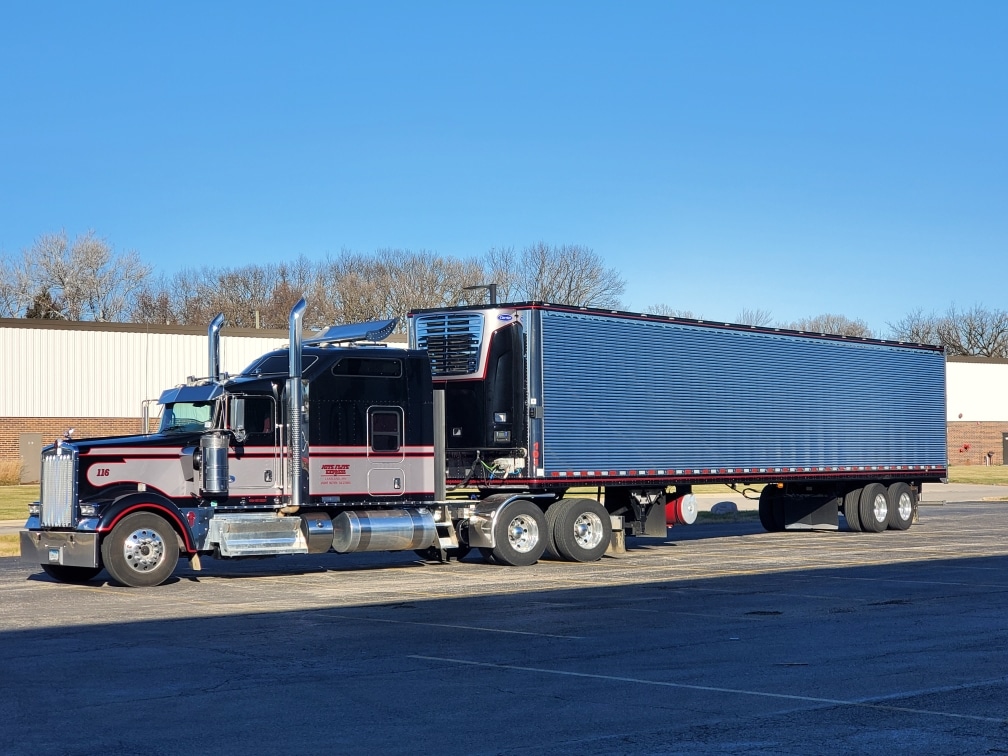Semi truck drivers have a long list of expenses that are required to keep them operational and on the road. In addition to personal expenses like meals and showers, there is also the cost of fuel, as well as routine truck maintenance and repairs. Diesel is the fuel that keeps the trucking industry rolling and, without it, nothing goes anywhere.
With each truck holding 150 – 300 gallons of fuel, the cost of diesel is one of the most significant expenses because, on average, a semi gets less than 10 miles per gallon. This means that not only is fuel one of the largest expenses that truckers deal with but boosting fuel economy is one of the most effective ways that truckers can save money.
Why Fuel Economy is More Important Than Ever
The cost of diesel fuel is one of the most significant operating expenses for truckers as well as trucking companies. When structuring freight costs, the cost of fuel will account for up to 20% of the cost for the trucking company. These prices shift constantly and also fluctuate depending on the region in which the driver is operating. For example, the price of diesel in the Midwest is often far lower than the price of diesel in the Rockies, or on the West Coast, where it can be 20 – 30% more expensive.
Political turmoil can also have a strong effect on the price of diesel. Since about 45% of the price of diesel is the price of the crude oil that is refined to produce it, the cost of imported crude oil moves prices more than a nominal amount. A large portion of the world’s crude oil comes from Eastern Europe, which is currently being affected by Russia’s invasion of Ukraine. This has had the effect of steadily raising the price of diesel across the US.
These price changes are magnified to incredible levels when put into the context of how much fuel a truck uses on a trip. A 1,500-mile one-way trip means the driver will travel 3,000 miles to get back to where they started. If they are getting an average of 8 MPG this means their trip will require 375 gallons of diesel. At the time of writing, diesel prices are $4.90, putting a cost of $1,837.50 on those 375 gallons. If the driver can improve their fuel economy by just 0.5 MPG, the trip would only need about 353 gallons, saving them 22 gallons of diesel, or about $108.
This is why increasing fuel efficiency is so important for those in the trucking industry. The things that commercial drivers, their dispatchers and management can do to increase the fuel economy of their trucks are often so simple and yield such immediate results that not making a conscious effort to do so is like leaving money on the table. Even part-time drivers stand to save thousands in fuel costs each year by making a few small adjustments to their driving habits and being more mindful when they’re operating.
What Is The Fuel Economy For Semi Trucks
The average fuel economy for semi trucks is between 7 and 10 miles per gallon. This is up considerably from the 1970s when semis were estimated to get about 5 MPG. By 2014, legislation demanded that semi trucks achieve at least 7.2 MPG. Since then, fuel economy has only improved but it still lags far behind the economy of smaller vehicles.
Tips To Increase Your Truck’s Fuel Efficiency
Reduce Your Speed
Driving at lower speeds can contribute to better mileage, with just a few small adjustments. For each 1 MPH over 50 MPH, there is an average reduction of 0.1 MPG. This means that even if you’re getting a solid 9 MPG at 50 MPH, you may only see 6-7 MPG once you hit 70+ MPH.
Limit Idling Time
Idling can use nearly a gallon of fuel each hour which means during your downtime, not only are you not actively making money, but you are incurring an expense. Even if you use just 0.5 gallons per hour, your 10-hour downtime will still cost you 4 gallons of diesel. Auxiliary power units, engine start-and-stop systems and supplementary power at parking are all great ways to reduce that fuel usage.
Check Your Tires
The NHTSA reports that improperly inflated tires can cost an additional $0.11 per gallon in mileage variances. If your tires are underinflated, you are forcing your engine to work much harder to pull your load against all that additional friction. For each 10 PSI of underinflation, you can expect to use 10% more fuel to compensate.
Cruise Control Is Your Friend
By computerizing your acceleration and braking with cruise control, you can eliminate a lot of the throttle fluctuation associated with staying at cruising speed manually. By keeping your truck at a more consistent speed, you’ll experience improved mileage.

Maintain Your Vehicle
By maintaining your truck properly, you can keep it running efficiently. Here are some maintenance items that can help your truck be more fuel efficient:
- Keep tires properly inflated to reduce rolling resistance and tire damage.
- Change your oil frequently to ensure the engine is lubricated and operating as smoothly as possible.
- Change air filtration media regularly to ensure complete and efficient combustion.
- Be sure your diesel particulate filters are clean.
- Install aerodynamic aids, if possible, and keep them secure and in good repair.
Don’t Accelerate Too Fast
Hard acceleration is a huge contributing factor to consuming too much fuel. Semis are made to give their best performance at lower RPM with higher torque. Pushing your truck through its RPM curve too quickly can waste fuel doing unnecessary work, so make sure you accelerate at a smooth and even pace until you reach cruising speed.
What Impacts Fuel Efficiency
The biggest factors that can influence a semi truck’s fuel economy are the driving habits of the operator. Beyond that, there is additional influence from the road grade, wind resistance, load weight, tire condition and vehicle maintenance. While some of these factors will weigh on the efficiency more heavily than others, they will all have a negative effect on the fuel economy of your semi.
Going up steeply graded mountain roads can cause the mileage to plummet down to just 3 MPG, while the operator may see their mileage skyrocket to 20+ MPG when descending that same hill on the return trip. Wind resistance plays a significant role since semis are not designed to be highly aerodynamic, and a strong headwind can reduce the economy even further. The weight of the loaded trailer will also determine how hard the engine will need to work to move it, and an overloaded trailer can cause a significant drop in fuel economy.
Tires are one of the most important components of a semi, and having tires that are underinflated or otherwise in poor condition can cause the engine to work harder against all of the additional friction. Tires aren’t the only vehicle component that can affect efficiency, however; neglecting oil changes, transmission service and regular tune-ups can cause the truck to be less efficient and to use more fuel during regular operation.
Contact Us Today!
If you have been experiencing lower fuel economy or need some routine maintenance to keep your engine running as efficiently as possible, contact Blaine Brothers today and speak with one of our service professionals. We can help you ensure that your truck is using its fuel as efficiently as it can, so you can reduce operating costs and keep more of your money in your pocket!


